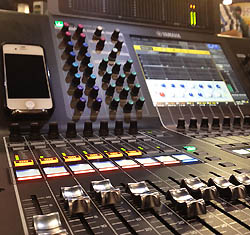We started off this article series (here) talking about when AVL (audio-video-lighting) people should be brought into a project, as well as how to develop some system objectives and how to get started on a ballpark budget. Now let’s get to the fun stuff: choosing key technologies and system design.
This is the point in the process that we start to pick out the big picture items of the project. Sometimes the church tech team has a good idea of what they want for these key components, other times, the integrator will make suggestions based on their experience and knowledge of the church. Either way, it’s time to start looking at gear.
Know What You Need To Accomplish
Previouly we defined system objectives, so we know what the system is supposed to do. I’ll use audio consoles for examples for this post because A) they illustrate the points well and B) I’m an audio guy at heart and I like audio consoles. But the same principles apply to lighting consoles, video switchers, projectors and video walls, cameras, etc. The questions vary, but the concept is the same.
We go back to defining our objectives. Start by asking these questions:
—How many inputs?
—How many outputs?
—How many mix buses?
—Do we do monitors from FOH, a separate monitor desk or personal mixers? Or a combination?
—Do we need remote (iPad) mixing capability?
—Do we want digital snakes? If so, which protocol? Or does protocol matter (sometimes it does, sometimes it doesn’t)?
—What kinds of processing do we need?
—Who will be operating it? Can we train our engineers to run it?
—Is the system scalable? Does that matter?
Once we have an idea of what we want the system to do, we can start narrowing our choices. But first, I want to hone in one question: who will be operating the equipment?
This is a question that is often overlooked. Case in point: You may know I’m a huge DiGiCo fan. I’ve mixed on an SD8 for four years, and I’ve used every other console they make. I’d rather mix on a DiGiCo than anything else. However, for a project we’re doing at Flexstage, I recommended a Yamaha QL over a DiGiCo SD9. And while my friends at DiGiCo might be bummed, the QL is the right choice for this church.
The SD9 is overkill and more complicated than their volunteers need it to be. The QL will give them capability they need with an easier to use interface. Personally, I’d take the SD9 any day (sorry, Yamaha…). But for this team, the QL is the better choice.
Don’t make the mistake of buying equipment that your team can’t use. I’ve seen a church wipe out their entire team because they bought a mixer none of them understand how to mix on. And without a full-time TD to take the time to learn it, the church was stuck. Think this through carefully.





















